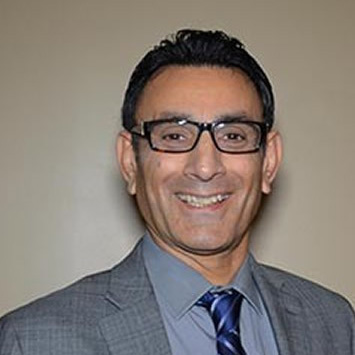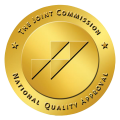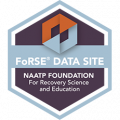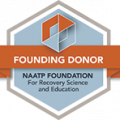There are many instances where a person could have an issue or problem that does not come from just a single source. Sometimes the more complex issues in life are due to a combination of things, which makes these things even more difficult to deal with.
These things can still be dealt with, however, and all it takes is seeking the proper way of doing so. In the context of substance abuse, there are cases where a person could have an existing substance abuse issue and also have a mental health disorder alongside it. One example of this is when people suffer both anxiety and addiction. This is where dual diagnosis comes in, as this approach allows a specialist to deal with both concerns at the same time.
This is important to note because in instances where two concerns exist side-by-side, addressing one after the other might not be as effective as dealing with both at the same time. There are many cases where dealing with one often first allows the other issue to worsen, making treatment much more difficult. This is particularly true if one of the conditions needing treatment happens to be anxiety.
When a person becomes anxious, the body is put on alert, prepared for any emergency. This emotion is accompanied by a heightening of the senses and an increase in blood pressure, all the better to respond to either a fight or flight response. Once the perceived emergency or need has passed, however, the body should return to the normal state where the anxious feelings subside.
There are many cases, however, where this state of heightened alertness does not subside, or comes out even without any real threat. This is when it becomes an anxiety disorder. As there are numerous instances that elicit an anxious response from different people, there are various forms of anxiety disorders that require treatment, or the person risks living a difficult life fraught with anxiety.
Some of the more common forms of anxiety disorders include:

Generalized anxiety disorders (GAD) manifest persistent worry and feelings of fear, sometimes to the extent that functioning properly becomes immensely difficult. People who have GAD could experience anything from overthinking to being completely distracted by unfounded excessive worrying and tension.
People experience the symptoms of GAD differently, as some experience the whole array of symptoms, while others only go through a few. These symptoms include:
- Persistent worrying over unfounded concerns
- Overthinking
- Preference for considering worst-case scenarios
- Unable to process uncertainty properly
- Finding a “threat” in most situations, whether valid or not
- Indecisiveness/Fear of making the wrong decision
- Constant feeling of tension/on-edge
- Difficulty in relaxing
- Difficulty concentrating on one thing as mind is preoccupied with multiple concerns
- Bouts of insomnia
- Fatigue
- Tremors and twitching
- Constant nervousness
- Profuse sweating
- Irritability
- Nausea
- Stomach pains
Panic disorder is the term for the type of anxiety that causes people to experience periodic or chronic bouts of paralyzing fear. In instances that the person is not paralyzed by fear, they engage in illogical actions brought about by intense fear.
This type of anxiety often leads to a panic attack, an episode of anxiety with severe chest pains, making the person think he or she is having a heart attack. Psychologists have not been able to conclusively find the exact cause of panic disorders, although many believe it is associated with some past trauma experienced.
Symptoms of panic disorder include:
- Constant feeling of impending danger
- Nagging fear of injury, sickness, loss of control, or death
- Profuse sweating
- Trembling or shaking
- Shortness of breath/difficulty breathing
- Chills or hot flashes
- Abdominal pain
- Chest pain
- Headaches
- Dizziness
- Lightheadedness
- Numbness or tingling sensation
- Feelings of detachment from reality
Obsessive-compulsive disorder (OCD) has often been used as a joke or to make fun of people who are extremely detail-oriented, but it is actually a serious condition. People who suffer from this type of anxiety disorder experience uncontrollable recurring obsessive urges and repetitive behavior. Should they not be able to engage in the action required to satisfy their obsession or urges, they will feel overwhelming fear, helplessness, and self-loathing. No amount of positive motivation or words of encouragement could convince these people otherwise.
This type of anxiety disorder is so overwhelming to the person that many often mistake them as being unable to engage in logical thought. The truth of it is that their ability to engage in logical thought is so honed and fine-tuned that they know what must be done to satisfy their urges, hence the need to constantly arrange, clean, or do whatever is needed to satisfy their urge.
Symptoms of OCD include:
- Intense fear of contamination or infection
- Intense need to arrange things continuously
- Tendency to become aggressive about not being able to satisfy the urge to clean or arrange things
- Constant nagging feeling of not securing things that need securing
- Tendency to speak one’s mind without filtering it
- Becoming immensely stressed when their idea of order is not followed
- Tendency to sexualize different things
- Intense compulsion to clean self to the point of injury
- Intense urge to follow or avoid certain patterns
- Intense urge to be sure about things
This type of anxiety is also called a social phobia and is characterized by an overwhelming and excessive feeling of self-consciousness in practically any situation that involves other people. This type of anxiety makes it nearly impossible for people who have it to make public appearances, give speeches, or attend any kind of gathering.
The intensity or severity of this kind of anxiety could be anywhere from the person just appearing to be immensely shy to being completely antisocial and even belligerent to other people. There are experts who believe this kind of anxiety originates from an experience of bullying, although other specialists are looking into a deeper connection with other forms of trauma.
Social anxiety has symptoms precipitated in the presence of other people that include:
- Nausea
- Difficulty speaking
- Profuse sweating
- Trembling or shaking
- Dizziness
- Lightheadedness
- Rapid heart rate
- Difficulty breathing
- Intense dread at the thought of being with other people
- Intense worrying ahead of a social event
- Need for alcohol for “courage” to be in a social event
- Overwhelming fear of embarrassment in a social event
This is another one of the more popular forms of anxiety disorder, as it has long-lasting effects that could invariably come out soon after the traumatic event, or it could come out years after when a specific trigger is encountered. Post-traumatic stress disorder (PTSD) was initially associated mostly with people who have seen extensive conflict or violence such as soldiers and members of the police, which is why it was initially called shellshock.
It was later found to largely affect many others, particularly those who were severely affected physically, mentally, and emotionally by a specific trauma. It is not limited to physical violence, as mental torture and emotional abuse could also bring about all the hallmarks of this anxiety disorder. There are cases of people with PTSD who experience such intense attacks or even a complete breakdown that they need immediate medical attention.
Many of the symptoms of PTSD are largely found in people who experienced injury, abuse, or a significant amount of violence. It could lay dormant in a person’s memory for quite some time before manifesting, and once it does manifest, it could escalate in severity quite quickly.
PTSD comes with the following symptoms:
- Intrusive memories
- Distressing and unwanted flashbacks
- Chronic dreams or nightmare about the trauma
- Severe reaction to anything interpreted as relevant to the trauma
- Intense reaction to physical or emotional triggers
- Depression
- Severe negative thoughts about life
- Gaps in memory, particularly anything relevant to the trauma
- Detachment from friends and family
- Bouts of being emotionally numb
- Suicidal tendencies
- Great tendency to abuse substances or alcohol
- Difficulty sleeping
- Difficulty in concentrating
- Self-destructive behavior
- Irritability
- Belligerence
- Emotional outbursts
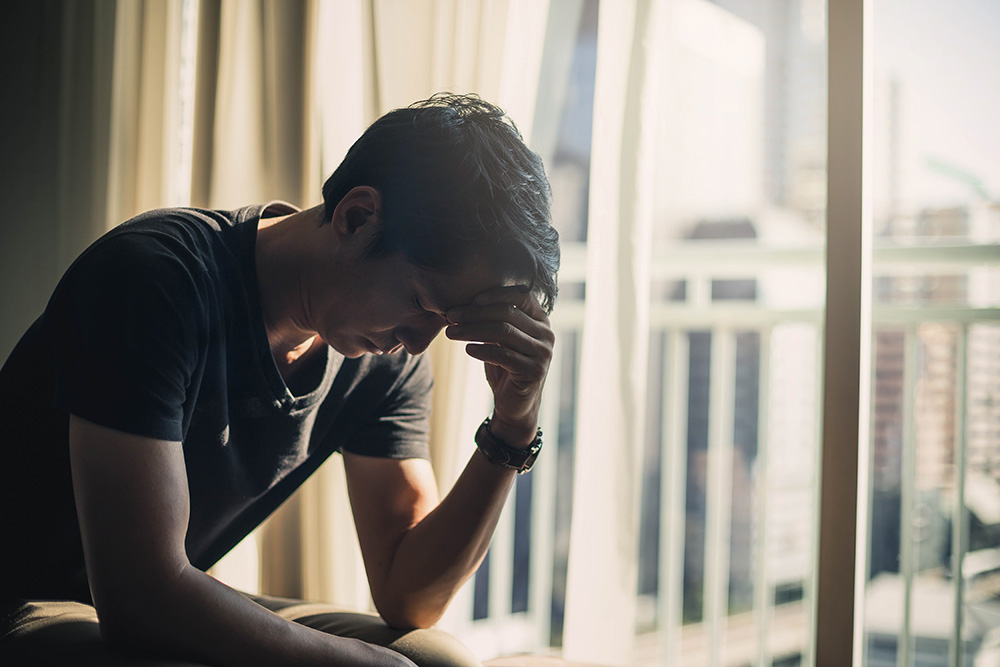
Does Anxiety Lead to Addiction?
This is particularly true of people who experience PTSD, which accounts for the high number of combat veterans becoming alcoholics or drug addicts. Most support groups that help people with their emotional or psychological troubles focus mostly on physical abuse, addiction, or alcoholism. These support groups become the focal point in the life of these people as they struggle with either anxiety or addiction, or even both at the same time.
Most people who turn to alcohol or drugs to deal with their anxiety admit that they tried reaching out to others for help, but on finding that many simply did not understand what they were going through, they simply chose what they thought was the next best thing: getting drunk or getting high.
Many people who experienced traumatic events that led to injury often got hooked on substances because they were taking prescription medication for the injury, and they discovered a side effect of taking more than the prescribed dose. This is the sad reality of why many who suffer from anxiety end up with an addiction.
What Treatment is Done in a Dual Diagnosis?
This is why there are many different treatment approaches for the treatment phase after the detoxification process, as different people tend to react differently to specific treatments.
Many people don’t always respond well to the “shock therapy” approach practiced by some where they expose people with social anxiety disorder to large groups of people, or when they force people with specific phobias to confront their fear by exposing them to it. There are those who respond better to careful and patient personal therapy as done in individual therapy.
This therapy allows the person to feel secure enough to open up on their own to accept the therapy and come to terms with their issues. The intimate and confidential nature of this therapy provides a safe and private atmosphere for the person, allowing them a feeling of ample breathing space and security from others whom they feel would judge them unfairly.
Support groups are immensely popular therapy approaches as it gives the person the feeling that they are not going through what they experience on their own, and that others are also in the same situation as they are. This gives them a sense of comfort and of belonging, which they might have been deprived of at some point.
Group therapy is also a good way to build a network of people who will not judge or be hostile to others in the group. As these are people that they can talk openly to about their issues, they receive a better sense of being able to reach out for help if they feel the coming of a relapse or a mental breakdown.
While cognitive behavioral therapy (CBT) might not be as effective in helping deal with anxiety for some, it is quite helpful in dealing with how people think they should react when in the throes of an anxiety attack.
CBT helps people in realizing that some of their thought patterns are not helping them in any way. This is particularly relevant to those who feel that the only escape from their anxiety is through the use of alcohol or substances. Once these thoughts are isolated and recognized, the person stands a better chance of developing a way of thinking that does not lead them to substance abuse.
Dialectical behavior therapy is designed to help people develop better responses to emotions that often overtake them and cause them to react blindly and often in the wrong way. This is important to note as the concept of control is a focal point for people who suffer from anxiety disorders.
In some cases, they need to feel like they are in control, even when they are not, and in other instances, they just feel like they just don’t have any control in what is happening, including their substance abuse. Empowering them to recognize what is happening and the other better ways that they could react to it, will go a long way to proving to them that they have control over their lives and their choices.
First City Can Help You with Dual Diagnosis Treatment
There truly is hope, and the only reason you didn’t see it was because you didn’t know where to look. Let us show you now.

